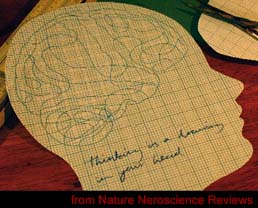I didnt know Id be a neuroscientist until about 2003 - it started out with a fascination for complex interactions. For two summers during my undergrad in Delhi, I enjoyed doing an enzyme drug docking simulation project, otherwise called rational drug design, at the All India Institute of Medical Sciences. The drug molecule I was assigned had to fit perfectly in the enzyme's active site. Just like a jigsaw puzzle many atoms needed to be in a perfect locking state. That got me thinking about larger than atomic scale interactions such as molecular interactions in biochemical networks, naturally since my undergrad was in biochemistry and I had to learn metabolic networks galore. Fortunately, I got the opportunity to work with Upi Bhalla, at the National Center for Biological Sciences, Bangalore, India. I couldn't have gotten a better introduction to biochemical network simulations. I worked on calcium release from intracellular stores. If you are not a neuroscientist, calcium is the magic in any cell. A majority of the time when an external signal hits the cell internal calcium levels change, which then activates mutliple molecular cascades downstream. I like to call calcium the CEO of a cell. But then one asks how does one molecule control a gazillion (ok not that many but close) functions. And that's when I discovered (for myself I mean) the whole field of chaos and oscillations and activity patterns with combinations of chaos and oscillations so that that where and when calcium was released and what kind of dance its concetration did in time would dictate who would listen to its command next.
This was my first foray into Neuroscience. I knew the field in general as Upi's lab was a Neuroscience lab, but that's when I became very interested in network interactions
 and dynamics - encoding
and decoding of the cryptics by which neurons convey information to
each other: the spacial and temporal profile of this communication and
especially so in the context of cognition, thought and behavior. I had
always wanted to study it in humans. I really admire simplistic systems
too like the leech and fruitfly for instance; the intricacies of
the human brain will probably never (i.e. not in my lifetime) be solved
with the clarity with
which we understand these less complex organisms; yet, there is a charm
to think
about a thought process and what codes it, and about what it is to be
conscious (which only we can certify to experience amongst all
organisms).
and dynamics - encoding
and decoding of the cryptics by which neurons convey information to
each other: the spacial and temporal profile of this communication and
especially so in the context of cognition, thought and behavior. I had
always wanted to study it in humans. I really admire simplistic systems
too like the leech and fruitfly for instance; the intricacies of
the human brain will probably never (i.e. not in my lifetime) be solved
with the clarity with
which we understand these less complex organisms; yet, there is a charm
to think
about a thought process and what codes it, and about what it is to be
conscious (which only we can certify to experience amongst all
organisms). That's when UCSD happened: the best place one can be for Neuroscience. I remeber the first day I came to my current lab to find out if I could do a rotation and my advisor, Steve Hillyard, said "have you ever been a subject in an EEG experiment?" and I said, quite curiously "nope", since I didnt know much about the field. Id not even thought of non-invasive human brain recordings before as a potential research field for me, but since then there's been absolutely no looking back. Its been fun, fun, fun all the way. I currently work on how different senses, especially audition and vision interact: specifically in scenarious where one is tricked into seeing illusory percepts while receiving a combination of auditory and visual inputs. I try to figure out what happens in the brain to cause these percepts using a whole gamut of computational analyses to pin down the exact timing and place in the brain of this coding, and also the pattern of the code which may consist of a group of neurons oscillating in a particular frequency range. It's much like playing detective and the most exciting time is when I have multiple disjointed clues that don't make sense and I feverishly think about them day and night, and then one fine moment I realize how all the pieces might fit together. I love those rare moments and they are what keeps me in science. As my advisor sometimes says 'Isn't science fun, eh!'
